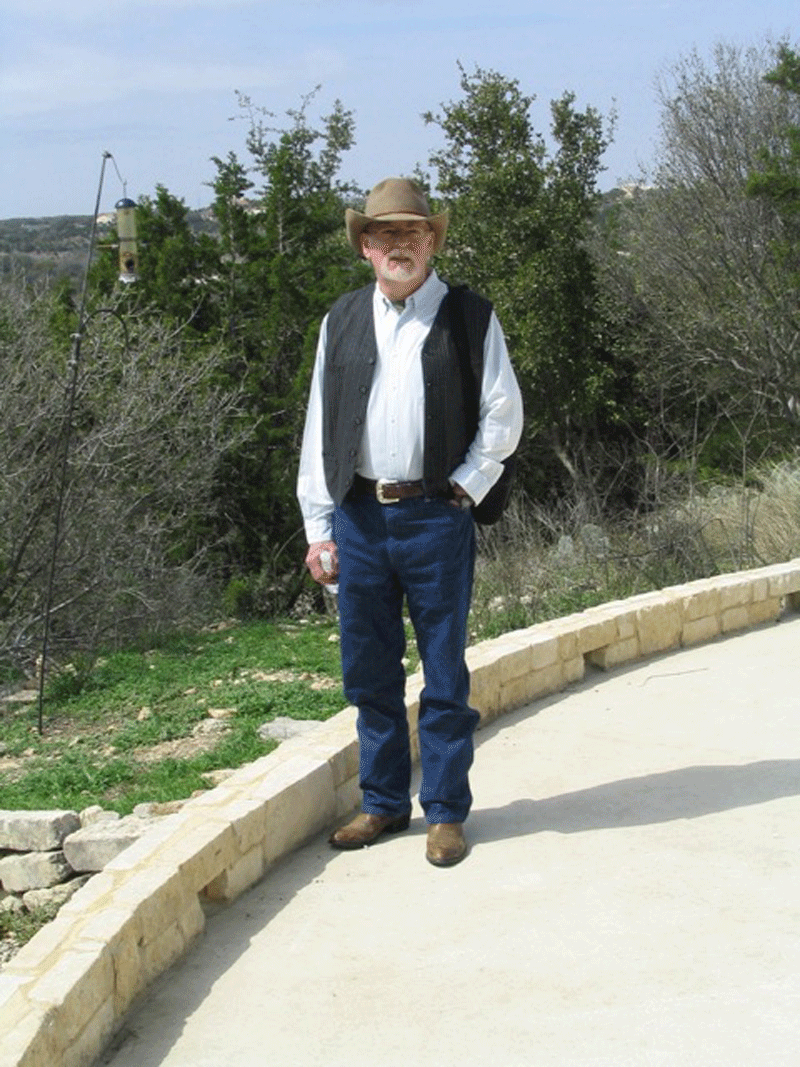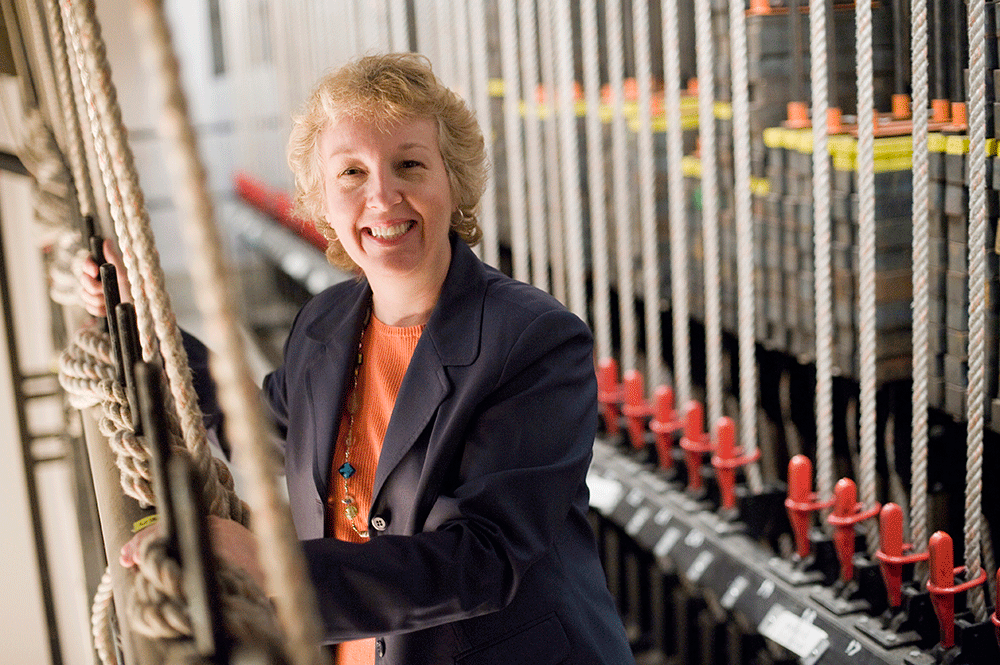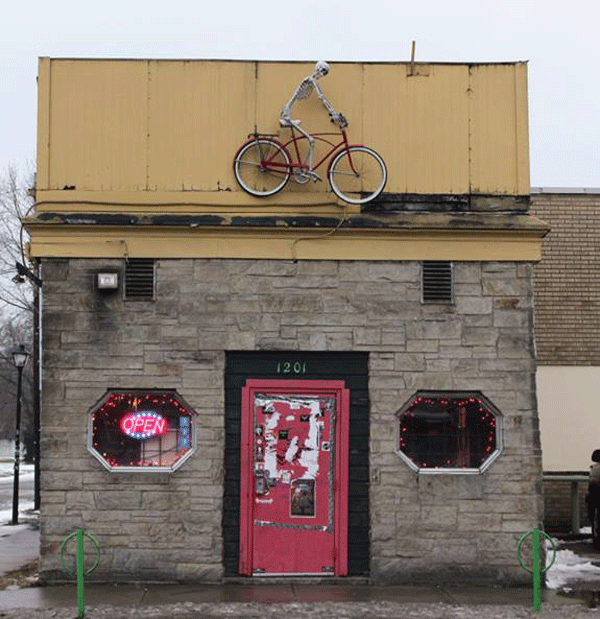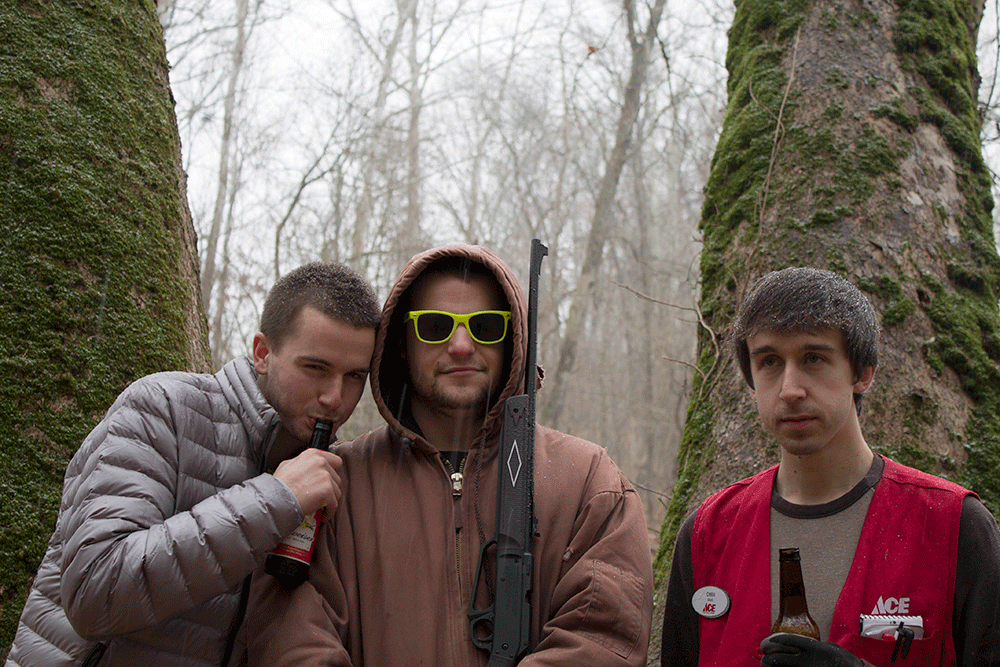A series of pits dug into the earth and filled with smashed pots are powerful testaments to the demand for accuracy and quality that the artist, Richard Tuck, required of himself. His classic training and high standards compelled Tuck to destroy the pieces that weren’t up to snuff. “He never wanted a piece to exist that wasn’t perfect,” says his wife, Barbara. Barbara Tuck and her husband thought they would grow old together. They moved through life as bonded companions, deeply in love and savoring the subtle details of their many adventures together. Both artists, Barbara also a teacher and Richard an accomplished potter, lived lives that revolved around their grounding in Christianity and celebration of the human spirit through the creation of art.
Set up to enjoy the next chapter in life, the Tucks had no idea what was about to come. There was no sign of the cancer that grew inside of Tuck’s brain until it was too late. One day an unusual fall off his bicycle sent Richard to the doctor with a list of questions to which the answers were, to put it lightly, a kick in the gut. A tumor in Tuck’s brain had interfered with his large motor skills, and he was given six short months to live. Tuck has since passed on, but his work still brings life to those it reaches, and under the careful, curative eye and commitment of his wife, his work will be cherished well into the future.
Throughout the Tuck home are vessels, small and large, filled with rocks, seeds, nuts and bits of driftwood all collected during walks and vacations after being noticed by a watchful eye and selected for their interesting texture or shape. Each object invites a visitor to pick it up, to engage in a tactile experience, and take note of the wonders of nature. Each example of Tuck’s work reflects his love of nature and our world.
When picking up a piece of his work, in this case a red bowl streaked by a splash of ecru, one instantly feels the accuracy of Tuck’s hand. His control and consistency of pressure are almost shocking; there are no ridges, no detectable movement from thick to thin. His pieces are surprisingly lightweight, as Tuck was able to achieve structural soundness without relying on the heavy body of the clay.
A quick peek at the underbelly of one of Tuck’s pieces reveals that no detail was left unattended. Each foot, or base, is finely tooled and finished off with an equally meticulous arrangement of tiny felt pieces, placed as a final touch with as much care and precision as was used in the creation of the vessel itself.
Attention to detail and focus on the classic elements and principals of art and design were poured into Tuck’s head at the Fort Wayne Art Institute. Tuck might also have credited the school for bringing his wife into his life. Attracted by a foot that poked out from behind a corner as she sat to draw, Tuck stepped around the wall to take a look.
“It was love at first sight,” says Mrs. Tuck, who stood by Tuck and supported his career from beginning to end. As a high school art teacher, she was able to support Tuck as a studio artist as he developed his craft and gathered footing in the art market. At that time he was interested in both sculpture and pottery.
“It wasn’t long before he came over to my class at the high school where he demonstrated on the wheel. It was like choosing between two loves; he couldn’t decide on pottery or sculpture,” says Mrs. Tuck. “When I came home that night he said he had found what he wanted to throw himself into for his life’s work.”
After her husband’s death, she made her life’s focus the preservation of her husband’s legacy. In the basement level of the Tuck home, a wedging board paired with a splash guard sits, still streaked by a line of clay bursts that seem to have just blasted off of the artist’s turning wheel. Mrs. Tuck has systematically made record of the space by photographing the setup as arranged by Tuck and by preserving his tools and materials. She is also determined to keep the spirit of the place alive. A children’s art table, used by young artists from the neighborhood and family, sits in the center of the floor where the potter’s wheel once dominated. Also gone are the tools and clay barrels that had lined the back wall.
“Each one weighed hundreds of pounds, so moving those was quite an ordeal,” says Barbara, who considers the hard work an honor to fulfill.
Just off of the throwing space is another room devoted to supporting the artist’s creative mind. It is an extremely organized space.
“He had to stay organized because he had so many talents,” says Mrs. Tuck. “He could paint, draw and did photography,” she says, holding up examples of his black and white city vignettes. In the closet is a lineup of categorized manila envelopes holding thousands of templates used during glazing, each an original design and cut by hand. Brushes are sorted and placed in shiny metal cans. An army of portfolios, each one the same size and color, stands neatly on the floor, all filled with graph paper and drawings made up of crisp, clean lines.
“His neatness references his classic mentality, but he wasn’t a really uptight person at all. His thinking was very open and free,” explains Barbara. “Richard produced hundreds of sketches before a new idea was produced.”
Tuck’s sketching was a direct reflection of his life experiences. He and his wife enjoyed many road trips together, and Barbara now realizes how important these trips were to her husband’s creative development.
“We traveled across country at least three times. His mind was like a sponge. Everything he saw he absorbed. He was a very quiet person. He didn’t even sketch while we were out on the road. He came home and then he would sketch and let the ideas come out. Now that I look back I realize how much he was absorbing.”
The designs Tuck developed to decorate his pottery are the result of his witness and interpretation of the cultures that make up our country. While he was attracted to many cultures, his designs were his own creation. Barbara explains of her husband’s process, “There is only a flavor of culture, nothing specific.”
Along with culture, the Tucks were interested in exploring religion. Both were intrigued by how other cultures interpret a personal belief in God.
“He had a spiritual element to all of his work,” says Barbara. “The bedrock of his work was the desire to communicate the spirituality that we all have within us and the human desire to discover our purpose.”
Mrs. Tuck takes her new purpose in life seriously, always following the standards and requirements that her husband had for his work. Sometimes the task of carrying out his wishes can be heart-wrenching. After Richard’s death, Barbara was faced with a body of work, frozen in all phases of production; the cancer stopped many pieces short of completion. The greenware (unfired, raw clay pieces) was taken to the woods and gifted back to the earth by gentle rains. The bisqueware, work that had been fired once and hardened to a permanent state, required Barbara to face the brutal reality of her loss. She was tasked with taking a hammer to each piece, coming down with destructive force onto each signature, simultaneously smashing it and also protecting the integrity of her husband’s work. “When the tears would roll, I’d stop for the day,” she says.
What remains is a depleting supply of Tuck’s finest work. The demand for his pieces is up, says Barbara.
“Works that hadn’t sold in years are now selling because he is gone,” she says.
His work is still housed by several area galleries, including the Orchard Gallery, Crestwood Gallery and Castle Gallery. The Haan Mansion Museum of Indiana Art in Lafayette, Indiana recently honored Tuck as one of Indiana’s notable potters. It was a turn of events that took Barbara’s breath away.
“Everything that God created on the earth was manifested in all of creation. That’s what he liked to celebrate in his work,” she says. “The colors, the shapes and forms in nature, he hoped it would help people realize that we are all connected in these subtle ways. He was a quiet man who spoke volumes through his work. Blessings are shouting and I am immersed in the joy received by supporting him, even after he has left this earth.”
 Submit Your Event
Submit Your Event



